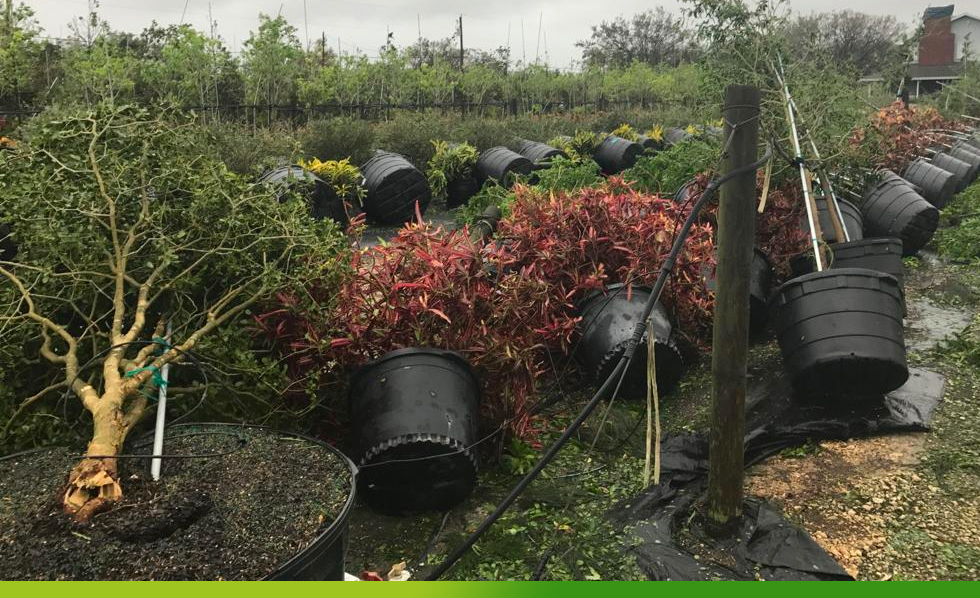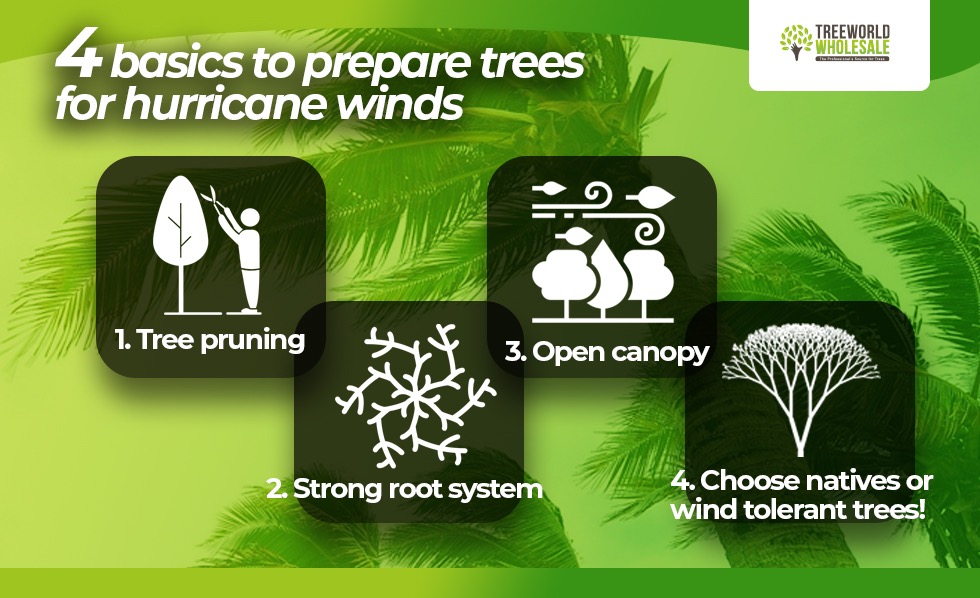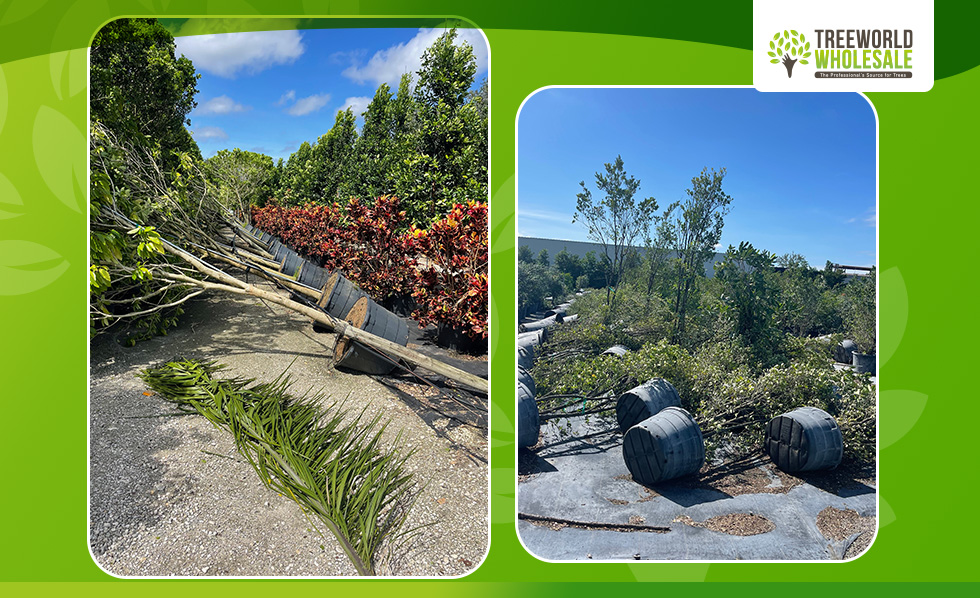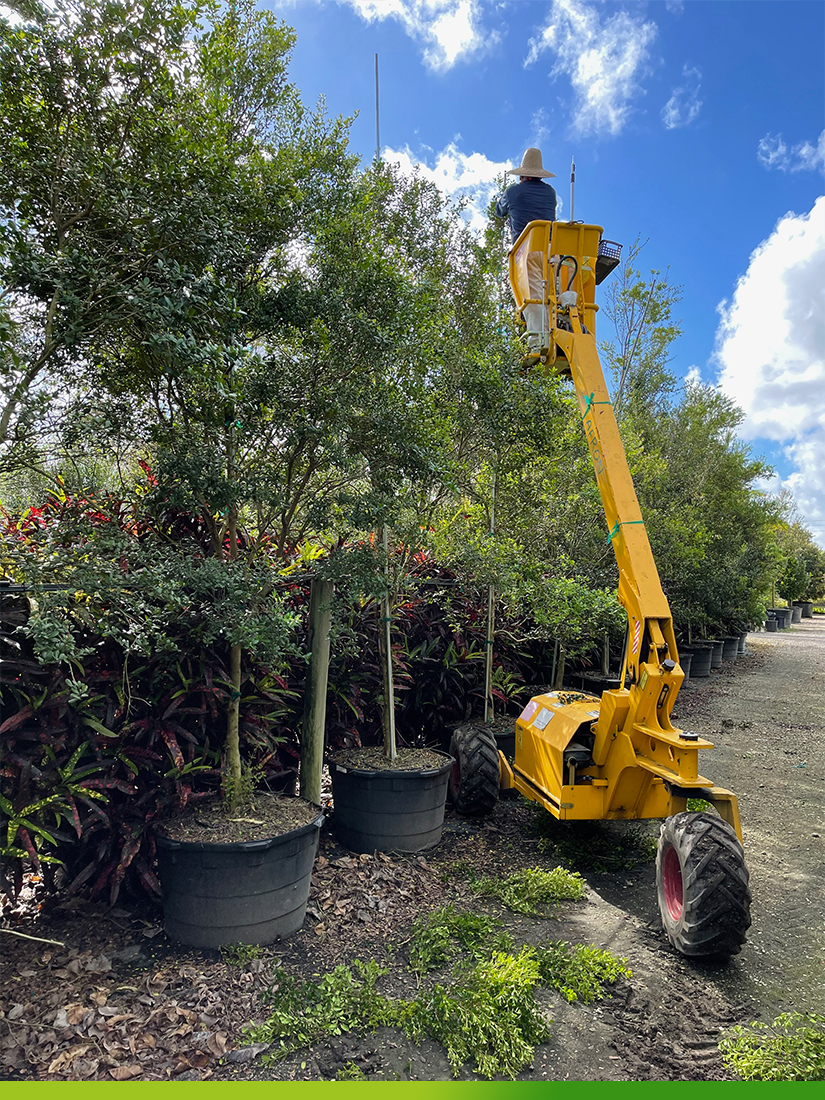It certainly is a big task to prepare and protect trees from hurricane winds! As a weather forecast of hurricane-force winds evoke fears of: (1) loss of life, (2) damage to property and (3) destruction of landscape trees and shrubs in private and public gardens. In the event of a hurricane, public agencies focus on real-time actions people need to take with regard the first two items.
As for the third item, private individuals (homeowners) and public officials (park and road agencies) can take precautions to minimize the amount of wind damage a hurricane can cause to the trees, shrubs (landscape). Some mitigation for wind damage can be done to some extent by long-and short-term gardening practices. Over the long term this involves the selection of tree species for landscaping which are known to have natural resistance to strong winds.
How to Prepare and Protect Trees From Hurricane Wind? 4 Tips
There are four basic tree characteristics to keep in mind, when talking about wind resistance.
First, a deep or extensive root system to provide firm support; making it less likely to be blown over. Also, trees need to have sufficient space to develop their root systems and therefore should not be side by side of other trees, structures or pavement.
Also, strong trunks and branches not prone to breakage. Remember, tree strength is related to wood density so that factor needs attention. Besides, trees in general with horizontal branching are stronger than those with upright branches.
Furthermore, a more open canopy. The test is of canopy density, if you can see through it, it is open. Finally, the tree age and condition. As a tree ages, it becomes less resistant to strong winds; moreover, a healthy tree similarly is more able to survive a hurricane. Old and trees with some sort of disease or condition should be removed as a precaution.
Also, Planning is an important part of getting your garden ready, and if you live in an area like South Florida, you need to know what the basic guidelines are to prepare trees for hurricane winds and select wind-resistant trees.
Planing a Hurricane Ready Garden
The configuration of a garden is also important in terms of minimizing the risk of falling trees or limbs causing damage to structures or other plants. It is important to keep short trees or shrubs nearest to a building and larger trees some distance away.
Also, to have knowledge of the most common direction of hurricane-force winds for a proper garden planning and replacement plantings. A tall shrub hedge, for example, in a perpendicular position to the wind direction; may help to reduce the wind damage within a garden itself. These long-term measures most easily do with the creation of a new garden; but in an existing garden it takes some more time for modification.
An existing garden of whatever arrangement can help reduce potential damage from a hurricane. But, it is important to have in mind the tree root systems, as excessive root pruning or any excavations under the tree canopy, can weaken the garden. The reason why this practice should be avoided as much as possible. Also, trees with multiple trunks are more vulnerable to wind damage than those with a single trunk; because they have greater exposition to a greater degree by winds. Hence, it is preferable to prune away smaller trunks and allow just a few strong leaders to grow. Finally, it is important to inspect branches and take quick action by removing damaged ones. Because they are most likely weak or may have insects or bird infestations.
Regular pruning or thinning of branches reduces the canopy density. Allowing strong winds to pass through rather than strike and lead to tree fall or branch breakage.
Wind-resistant Trees: South Florida
Studies of the impact of hurricanes on trees in South Florida have revealed that certain species are more wind-tolerant than others and have a greater chance of survival. In general, conifers and palms fare better than broadleaf trees. Also, it is important to plant native trees, as they exhibit greater hurricane survivability than exotic species. Taking action in response to the above suggestions may help your garden. And will help you come through the next tropical depression with less damage.
Examples of wind-resistant trees in the TreeWorld inventory include:
- Red Maple (Acer rubrum)
- Live Oak (Quercus virginiana)
- Pigeon Plum (Coccoloba Diversifolia)
- Red Stopper (Eugenia Rhombea)
- Crabwood (Gymnanthes Lucida)
- Verawood (Bulnesia Arborea)
- Lorito (Pithecellobium Arboreum)
- Allspice (Pimienta Dioca)
- Bayrum (Pimenta Racemosa)
- Tree of Life (Guaiacum Officinale)















